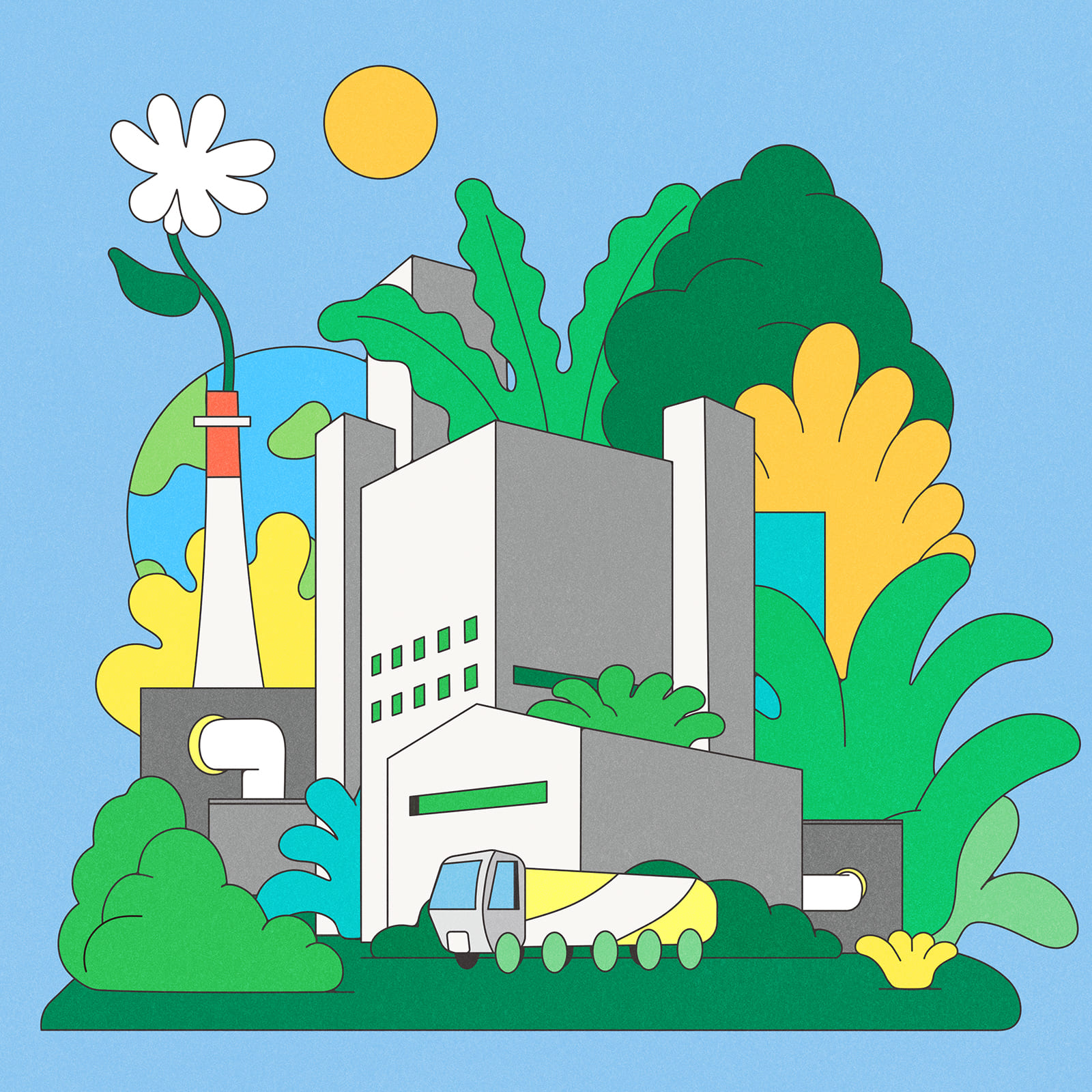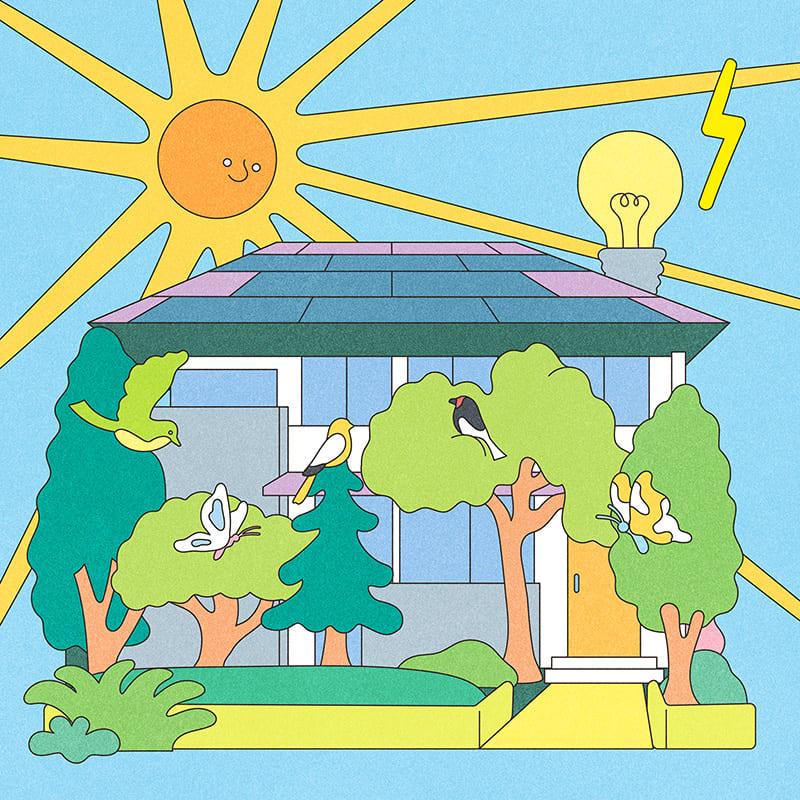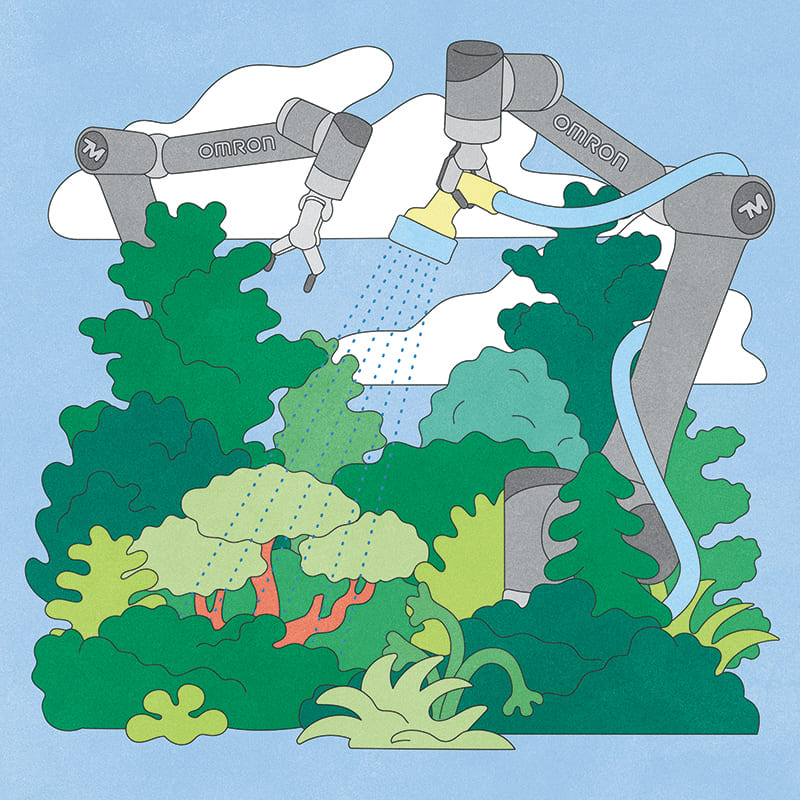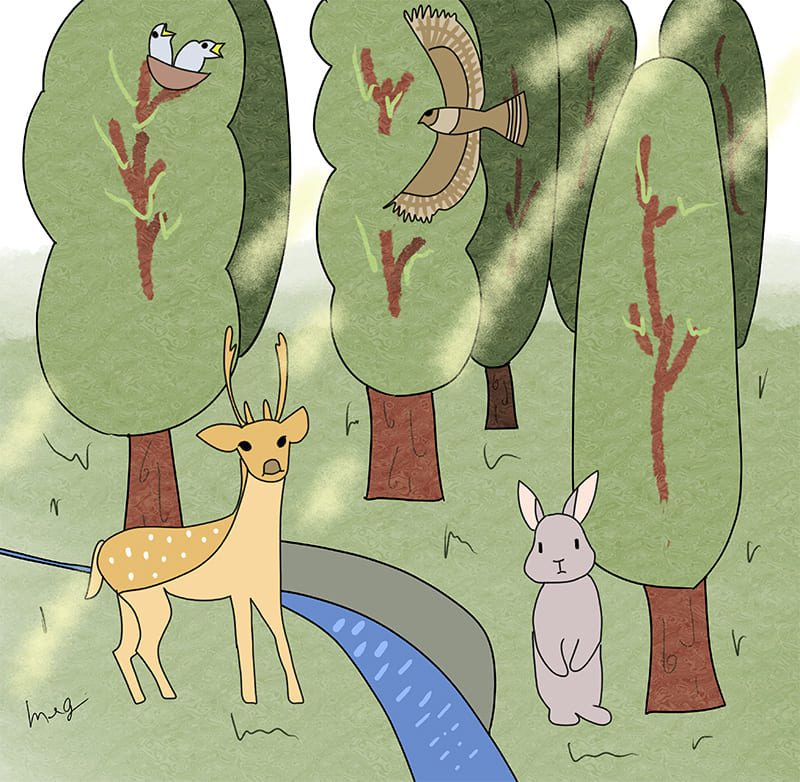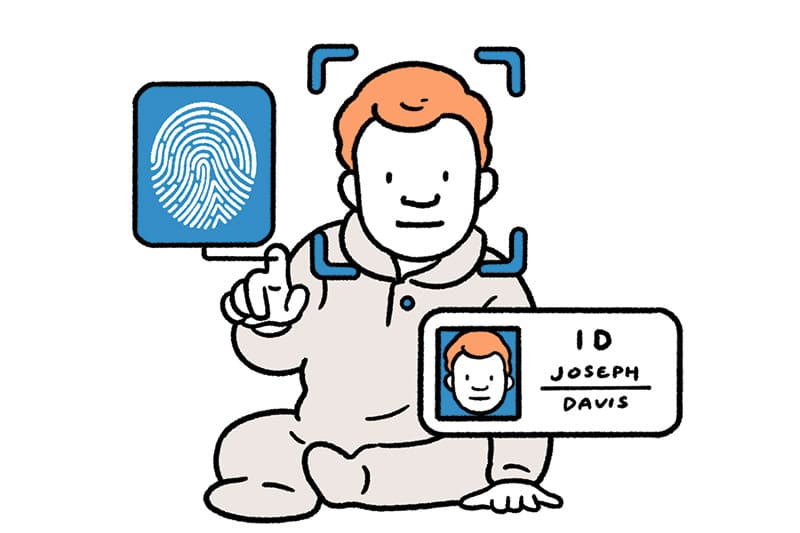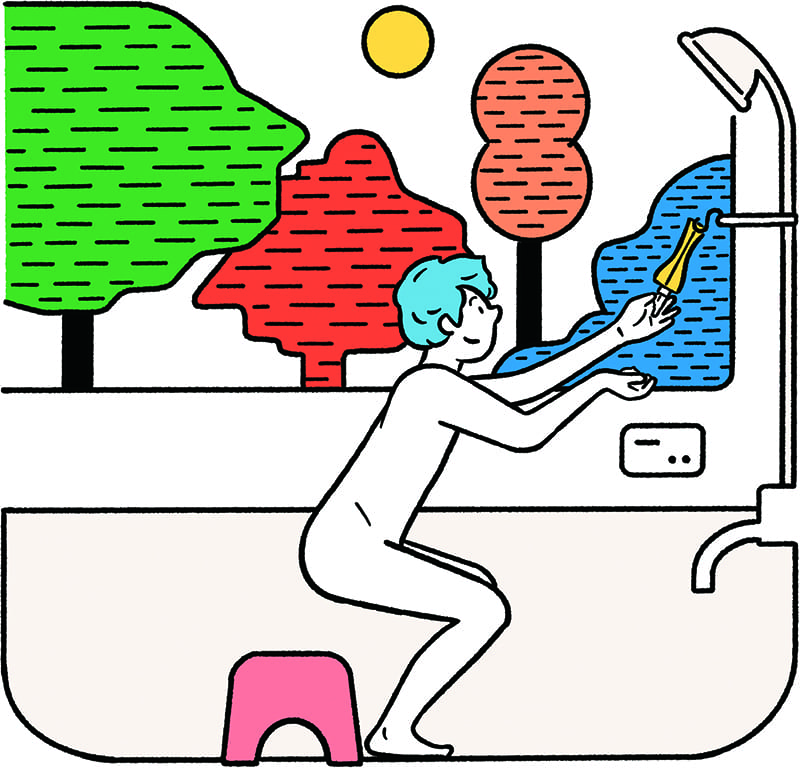January 27, 2023
Ricoh leads in decarbonization and circular economy efforts
Mission: Sustainability VOL. 5: Ricoh Co.
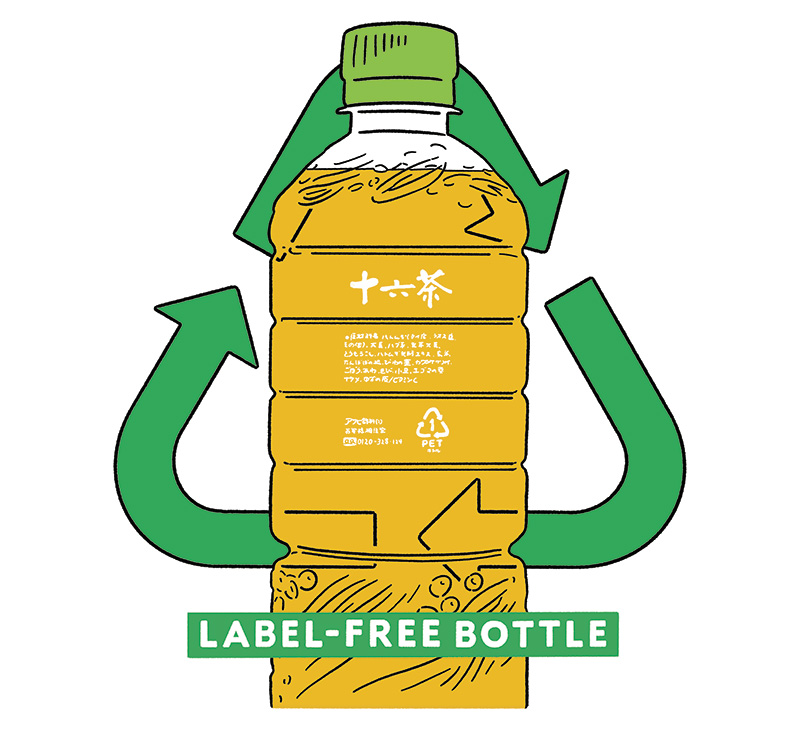
Ricoh’s strong points
1.Participated in the renewable electricity initiative RE100, becoming the first Japanese company to do so and encouraging others to follow suit
2.Selected in all ESG indexes for Japanese stocks adopted by the Government Pension Investment Fund, including the FTSE Blossom Japan Index
3.Has achieved one of the industry’s highest levels of energy-saving performance for multifunction printers using its original Quick Start-Up technology
4.Has been developing a technology that can transform customers’ business models into a circular economy-based model
Ricoh Co., a leading provider of digital services, information management, and print and imaging solutions, was one of the earliest Japanese companies to adopt ESG-oriented management, in which ESG stands for environmental, social and governance. The company has always stayed at the cutting edge and led other companies.
Its initiatives are comprehensive and wide-ranging. Now Ricoh’s thinking has gone beyond its group companies and reached a stage where it is seeking ways to involve other companies to realize sustainability.
That Ricoh is a sustainability-leading company has been proved multiple times by objective recognition. In December 2022, Ricoh was chosen as a constituent of the Dow Jones Sustainability World Index (DJSI World), one of the globally authoritative ESG investing indicators, for the third consecutive year.
In the category of computers & peripherals and office electronics, four companies, including HP Inc., were chosen. Of these, Ricoh was the only Japanese company to be selected.
In the same month, the company was included in the international nonprofit CDP’s highly regarded A List in the climate change section, again for the third straight year. Furthermore, Ricoh is included among the constituents of all five Japanese-stock ESG indexes adopted by Japan’s Government Pension Investment Fund, one of the largest pension funds in the world.
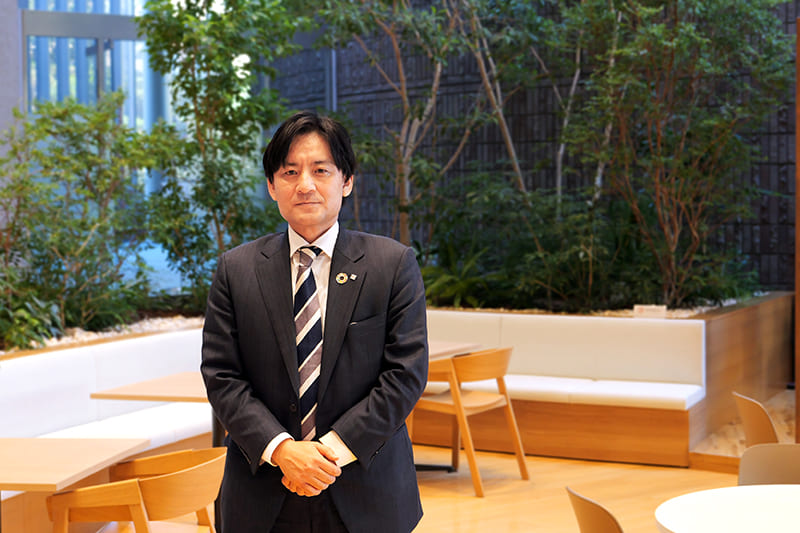
Always a leader
In April 2017, Ricoh became one of the quickest Japanese companies to respond to the Paris Agreement adopted in December 2015 when it pledged to aim for zero greenhouse gas emissions across its entire value chain. Furthermore, in March 2020 it set ambitious targets of reducing Scope 1 and Scope 2 emissions by 63% and Scope 3 other emissions by 40% from the 2015 levels by 2030, which was recognized by the Science Based Targets initiative as meeting its criteria for setting emission reduction goals that help limit the rise in global temperature to 1.5 degrees Celsius above pre-industrial levels.
In addition, the company is working to increase the share of renewable energy-derived power used in its operations to 100% by 2050. In March 2021, the company raised the target figure for fiscal 2030 to 50% from 30%. The commitment that Ricoh’s efforts have demonstrated and its track record have brought it high objective evaluations. Still, its efforts and track record in recent years alone do not reveal the full picture of Ricoh as a leader.
Ricoh has pioneered sustainability and ESG management, in which business and sustainability initiatives are realized in tandem. The company’s history is proof that it is a leader.
Ricoh established the Environmental Promotion Section, a department exclusively in charge of environmental issues, in 1976, making it one of the earliest to make such a move. It established the “Ricoh group environmental principles” in 1992 and then advocated sustainable environmental management, which makes environmental conservation and the creation of economic value compatible, in 1998, again ahead of other companies. The company has thus led other Japanese companies in sustainable environmental management.
Since Yoshinori “Jake” Yamashita became president in 2017, the company has upgraded its sustainable environmental management into sustainability and ESG management and has strengthened strategies. Following the Paris Agreement, the “Ricoh group environmental declaration” was established. It states: “We proactively reduce environmental impact and strive to improve the Earth’s self-recovery capabilities to achieve a zero-carbon society and a circular economy through business,” summarizing Ricoh’s determination. This was years ago, at a time when terms such as “decarbonization” and “circular economy” were still not in general use.
An especially epoch-making event was Ricoh’s participation in RE100, an international initiative that aims for switching to 100% renewable electricity.
Participation in RE100
RE100 is a global initiative in which member companies commit to procuring 100% of the electricity they need for business operations from renewable sources. In April 2017, Ricoh became the first Japanese company to join this initiative, which was established in 2014 by The Climate Group, a United Kingdom-based nonprofit.
A major factor that led to this decision was the 2015 U.N. climate conference in Paris, at which the Paris Agreement was adopted. It was an important conference in which a new international framework to replace the Kyoto Protocol was to be decided. Ricoh, which was chosen as an official sponsor, provided multifunction printers and printers used at the venue. Ricoh’s selection was the result of its sustainable environmental management efforts since 1998 being highly regarded by the French government, which hosted the conference, and the Conference of the Parties secretariat.
While serving as an official sponsor and communicating with VIPs of European countries and leaders of global companies, Ricoh became painfully aware of the strong awareness held by the rest of the world.
“Ricoh was one of the companies that embraced sustainable environmental management early, and we took pride in having led other Japanese companies, but the rest of the world was a step ahead of us,” said Satoshi Abe, general manager of the ESG Center in Ricoh’s professional services division. “Many famous companies had embraced decarbonization and zero CO2 emissions, and they took action with strong determination.”
“So we reported the situation at the management committee meeting, and we agreed we’d have to change our goals and their design in a major way,” he continued, “and in that process, we also talked about RE100. Naturally, we said we should join. We didn’t need to persuade the rest of the company, thanks in part to President Yamashita’s strong leadership.”
Ricoh thus decided to participate in RE100 in a natural way, but it surprised other Japanese companies.
Immediately after it joined RE100, Ricoh received inquiries from other companies in various industries about why it had joined the initiative and how it had managed to join. In particular, member companies of the Japan Climate Leaders’ Partnership showed notably strong interest.
JCLP is an industry-spanning organization unique to Japan. It was established in 2009 by companies, including Ricoh, that had a sense of crisis about climate change and a sense of mission to take action about it. It now has more than 200 companies as members.
In May the year after it joined RE100, Ricoh held a study meeting on participating in RE100 for JCLP member companies. Following this, many JCLP members joined RE100, including Sekisui House Ltd., Askul Corp., Aeon Co. and Fujitsu Ltd.
As of January 2023, there were 77 Japanese companies among the RE100 companies, which totaled 397 worldwide. Japan’s number was the second-largest in the world, after the United States. Ricoh undoubtedly played the central role in making this happen.
JCLP’s activities include involvement in policymaking. It thus has been active in lobbying. In April 2022, Yamashita, who serves as co-head of JCLP, met with Prime Minister Fumio Kishida and handed him a document urging the government to promote policies placing top priority on renewable energy.
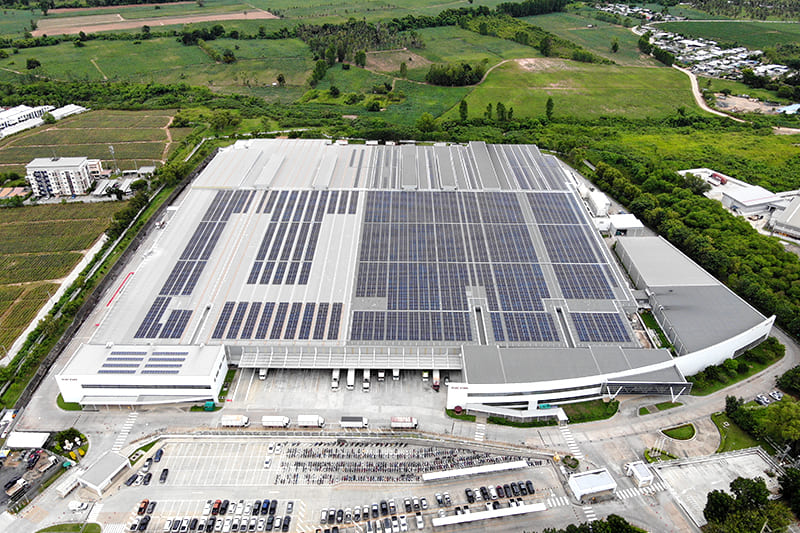
Environment and ease of use
Ricoh has continued to have positive impacts not just on businesses but also on government policies. Its commitment to decarbonization and reduction in greenhouse gas emissions is also reflected strongly in its products. For example, it has continued efforts to enhance the energy-saving features of its flagship multifunction printers.
The Imagio Neo350/450 that Ricoh introduced in 2001 surprised the world because the copier started up in just 10 seconds from sleep mode, a process that took more than 30 seconds for other models at the time.
A key to saving energy for multifunction printers, which also work as copiers, is to reduce their energy consumption when idle, which is said to average 90% of the time. Sleep mode, which kicks in after a specified period of inactivity, was developed to reduce energy consumption but led to a new problem: taking too long to wake up. For a printer to be able to begin printing, its fuser roller has to be heated to a sufficient temperature. As startup times of over 30 seconds caused stress on users, sleep mode was often shunned at many offices.
Noting this, Ricoh began work to develop a technology to shorten the time for a printer to wake up, which resulted in its proprietary Quick Start-Up (QSU) technology. In doing so, Ricoh developed innovative technologies. In terms of components, it developed a toner that can be fixed at low temperatures and made the fuser roller thinner so it can be heated more quickly. Multiple heaters placed inside the roller were controlled to achieve an even temperature distribution. These technologies combined to achieve a startup time of 10 seconds for a monochrome machine, the shortest in the world at the time. The Imagio Neo350/450, the first product to be equipped with QSU, became an epoch-making product globally.
A prototype of the machine exhibited at the 1999 Comdex computer and software trade show was praised as a “copier for the future” and was recognized with an energy-saving technology award. In Japan, the product won an Energy Conservation Grand Prize Award, the first copier to do so.
Ricoh continued to make improvements in QSU. The current, fourth generation of the technology has not only achieved industry-leading energy-saving performance but also significantly reduced the startup time from sleep mode to just over five seconds.
¥30 billion in sales
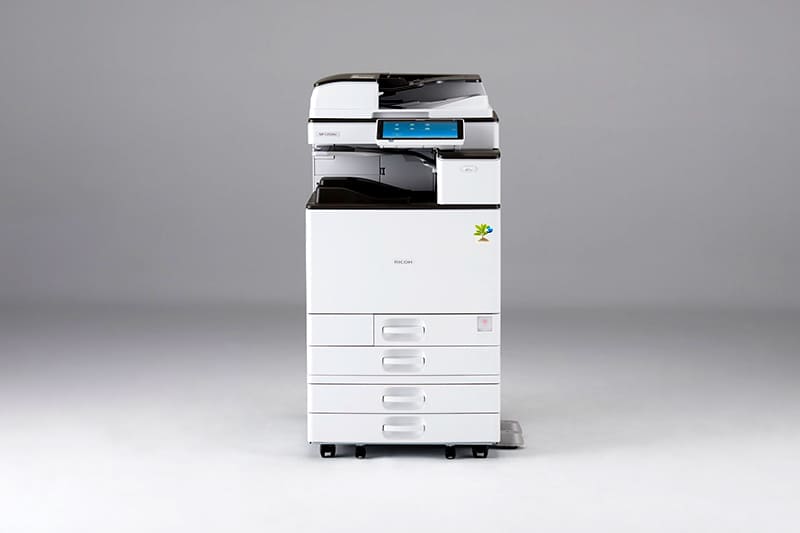
Ricoh’s efforts on sustainability are not limited to measures centering on saving energy and using renewable energy to avert climate change. Ricoh has also demonstrated leadership in efforts to achieve a circular economy, in which resources are reduced, reused and recycled without being wasted.
In the 1990s, the company launched a global program in which multifunction printers, other printers, toner, ink and replaceable components collected from customers are reused or recycled. In 1997, the first recycled machine, which Ricoh calls the “RC machine” and was created under the program for reuse and recycling, went on sale. Over the decades following its launch, Ricoh’s product and component recycling business grew to generate sales totaling about ¥30 billion (about $275 million at that time) in fiscal 2021, which ended in March 2022. Reused components represent over 80% in the latest RC model, introduced in 2021. The total emissions of carbon dioxide during its entire product life cycle is about 20% less than those of products assembled from new components.
Ricoh was also early to begin working on an innovative technology to expand the reuse of iron in industry-spanning projects: the adoption of electric furnace steel sheets, a product made entirely from recycled scrap steel.
In March 2012, Ricoh announced it would use electric furnace steel sheets that it had jointly developed with Tokyo Steel Manufacturing Co. in the steel structural components of its multifunction printers. Ricoh thus became the first company in its industry to use electric furnace steel sheets in office equipment, which surprised rivals.
Needless to say, electric furnace steel sheets have a lower environmental impact than steel sheets from blast furnaces in every way. Recycled electric furnace steel sheets, which contain slight impurities, are inferior to steel sheets from blast furnaces when it comes to surface cleanliness and the ease of forming or processing them. They were thus used mainly as construction material. It was customary for products such as automobiles, precision equipment and home appliances to use steel sheets from blast furnaces. Ricoh achieved what had been thought impossible.
Ricoh identified the properties required for the materials in its multifunction printers. Tokyo Steel then realized the development and production of steel sheets for high-performance multifunction printers by making electric furnace steel sheets thinner and enhancing their electrical conductivity and press-formability.
‘Comet Circle ( TM )’
These efforts over many years were outlined in the Circular Economy Report 2021, published in March 2021. This was published separately from the company’s integrated reports and TCFD reports on climate change measures. The Circular Economy Report was published in accordance with guidance worked out by the Ministry of Economy, Trade and Industry and the Ministry of the Environment in January of that year. There are not many companies in the world that publish similar reports.
Ricoh demonstrates leadership in the world, not just in Japan. What drives Ricoh to do so is its unique concept.
Nearly three decades ago, in 1994, Ricoh designed “comet circle,” a diagram that represents a concept in which environmental loads are reduced not just in manufacturing but across the entire product life cycle, including its upstream and downstream. This diagram is very similar to a widely known conceptual diagram of a circular economy. Parts of the circular economy diagram are said to be based on the comet circle.
The important thing is, Ricoh is aware that it is a manufacturer of products and that their basic designs have a significant bearing on environmental loads. Under the view that manufacturers have a responsibility to lead efforts to reduce environmental loads across entire product life cycles, the comet circle shows Ricoh’s determination to play that role.
Today, Ricoh is working on reforms involving customer companies in accordance with the comet circle concept.
Changing customers
“What we have built up over three decades through reusing and recycling multifunction printers is the activity to make our business model a circular-economy-style one,” ESG Center General Manager Abe said. “We will of course continue working to enhance this activity, but what we are currently focusing effort on is the initiative of providing value and solutions required to make customer business models circular-economy-style ones.
The example that is easiest to understand is a technology that uses lasers to print directly onto plastic bottles so they can be sold without labels.
The plastic labels wrapped around plastic drink bottles are a cause of plastic waste. Furthermore, as they have to be removed before the bottles can be recycled, such labels are a source of inefficiency in the recycling process. Noting this, drink makers have been expanding the sale of labelfree plastic bottles since around 2020.
However, label-free products are often available only in batches packaged in cardboard boxes that show ingredients and other required information, because that level of detail remains very difficult to be directly shown on plastic bottles, although the basic and legally required material identification marks can now be embossed on them.
Guidelines by the Council for PET Bottle Recycling prohibit the use of ink to print product names, logos, ingredients and other such information directly on plastic bottles.
Ricoh thus developed a technology for printing detailed designs and characters on bottle surfaces using a laser marking technology that does not affect the recycling of plastic bottles and does not involve ink. In December 2021, Ricoh worked with Asahi Soft Drinks Co., a major beverage maker in Japan, to sell 1,200 cases of trial products on Amazon.
For consumers, the new technology eliminates the bother of removing plastic labels from bottles when disposing of them. For beverage makers, it reduces the costs of making and printing on separate labels. For recyclers, it reduces the load on workers of separating materials. It is a breakthrough technology that is expected to facilitate the recycling of bottles at every level, from consumers and manufacturers to recyclers.
Sales of labelless plastic bottles using the laser-marking technology have only just begun, and it is not yet regularly available to consumers. But there certainly is a possibility that the technology, with further improvements and cost reductions, may become mainstream in the near future.
President Yamashita has told Ricoh employees, “You must do activities at the world-leading level.” The company’s 30-year footsteps have entered a new phase.
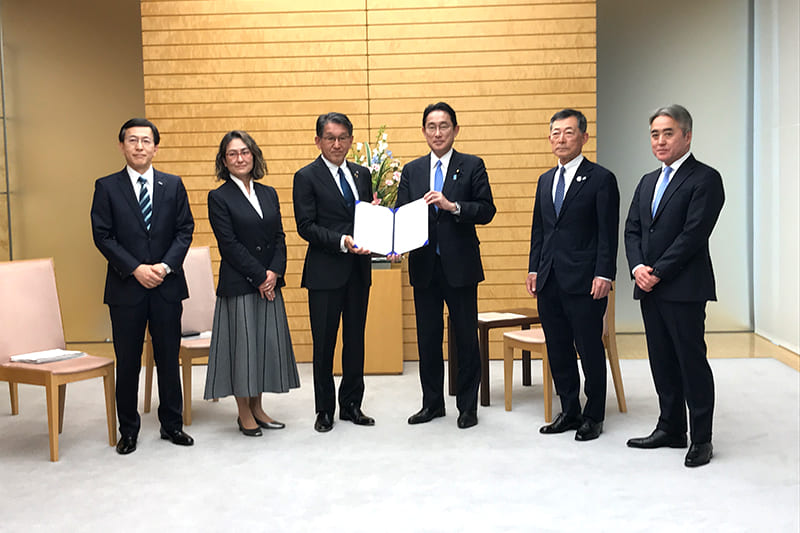
脱炭素・循環型社会で日本企業をリード
複合機などのデジタル機器を手掛けるリコーは、日本でESG経営への対応が最も早かった一社。常に時代の先を行き、日本企業をリードしてきた。
例えば、事業に必要な電力を100%再エネで調達することを目標に掲げる国際イニシアチブ「RE100」に、リコーは2017年4月、日本企業として初めて参加した。世界400社近いRE100の参加企業のうち、日本企業は77社と米国に次ぐ世界2位の多さ。その流れを作ったのは紛れもなくリコーである。
そして今、リコーは「コメットサークル」の概念を突き進むべく、顧客企業をも巻き込んだ変革に取り組んでいる。最もわかりやすい例が、PETボトルにレーザーで印字して、ラベルレスにする技術だろう。
リコーは、インクを使わず、PETボトルのリサイクルに影響を与えないレーザーマーキング技術で、ボトル表面に細かなデザインや印字を施す技術を開発。2021年12月、飲料大手のアサヒ飲料と共同で1200ケース限定のテスト販売をAmazonで行った。
Return to Sustainable Japan Magazine Vol. 20 article list page

